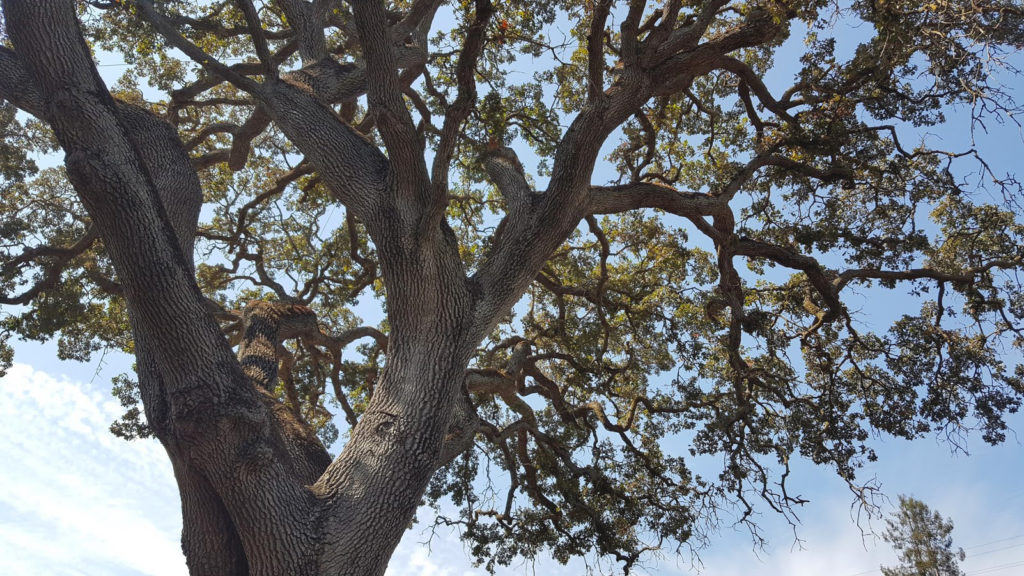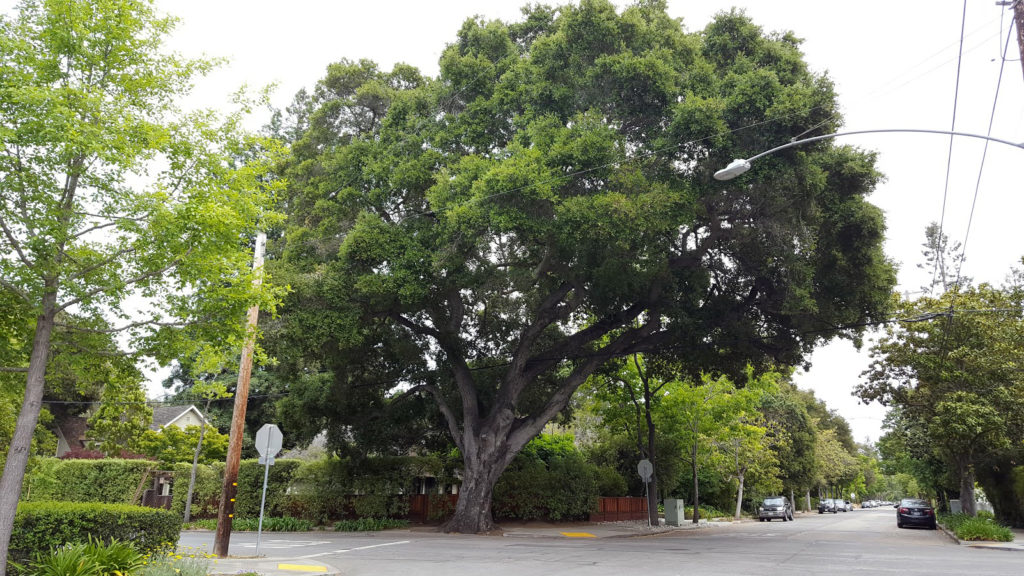- About Us
- Our Work
- Tree Info
- Get Involved
- Blog
- Support Us
By Canopy Team on October 16, 2017

Welcome to the third installment of Canopy’s Oaktober Series! Read about the story behind Oaktober in our first post, or check out tips on how to care for your California native oak in our second post.
When we see large native oaks in our neighborhoods, we see the unique result of hundreds of years of endurance. Trees give us much more than they receive, so let’s break down why oaks get the spotlight this Oaktober.
In a newly released report, Re-oaking Silicon Valley: Building Vibrant Cities with Nature, part of the Resilient Silicon Valley project funded through Google’s ecology program, the San Francisco Estuary Institute highlights the critical role played by oaks. Here are some highlights from the report, to inspire us to protect and plant oaks.
One major role played by California native oaks is the provision of valuable functions for wildlife. Shared evolutionary history has produced diverse flora and fauna that are adapted to use and depend on oaks. Scientists have observed that in a single year, an oak tree can provide habitat for over 300 species of vertebrate wildlife, 370 fungal species, and almost 5,000 insect species.
Behold the mighty oak, a nut who stood her ground.
That’s a lot of critters depending on one tree! Oaks also contribute to soil nutrient and hydrological cycling, and form the base of a rich and varied food web (largely through acorn production).
You know who else benefits from California’s native oaks…people! Oak landscapes increase biodiversity and ecological resilience, improve critical urban forest functions like shade and carbon storage, and enhance the capacity of cities to adapt to a changing climate. People thrive under the shade of healthy oaks, with cleaner air and more beautiful surroundings.
Valley oaks are the largest and most long-lived oak species in North America, and are a highly iconic California image. Yet, these oak woodland keystone species are also one of the most impacted of California oaks with populations continuing to decline.
We must protect our large oak trees – they are relatively rare and particularly important. The benefits of large trees cannot be overstated, because we know that large-growing and long-lived trees pay us back economically, socially, and environmentally.
Re-oaking is an approach developed by the San Francisco Estuary Institute to reintegrating oaks and other associated native trees and vegetation within California landscapes. We have the rare opportunity to shape the aesthetic character, sense of place, human health, and biodiversity of the next century. We can do this by planting oaks, integrating herbaceous vegetation and shrubs, increasing wildlife habitat, and prioritizing focal species of birds and butterflies in our designs and planting efforts.

Indigenous Californians thrived in Llano de los Robles (Land of the Oaks) for thousands of years, harvesting acorns and introducing fires that significantly shaped the valley. By the early 1900s we became the Valley of Heart’s Delight, where people converted the land to highly productive agriculture and orchards. Then within 100 years we became Silicon Valley, a patchwork of urban trees and developed areas. The last wave of urban tree plantings 50-75 years ago is nearing the end of its lifespan and we now have the chance to shape our environment once again.
Our current tree canopy cover is already comparable to historical oak woodlands, so what would re-oaking require? Not a substantial increase in tree numbers, but a substantial shift in what trees we choose to plant and protect. With hundreds of years behind us, we move forward to the new generation of oak plantings and oak advocates.
For more information about the Resilient Silicon Valley project, Re-oaking Silicon Valley, contact Elise Willis, Community Forestry Program Manager at Canopy, or Erica Spotswood, project lead on Re-oaking at SFEI.
Silicon Valley Estuary Institute: Re-oaking Silicon Valley
Canopy: The Benefits of Trees